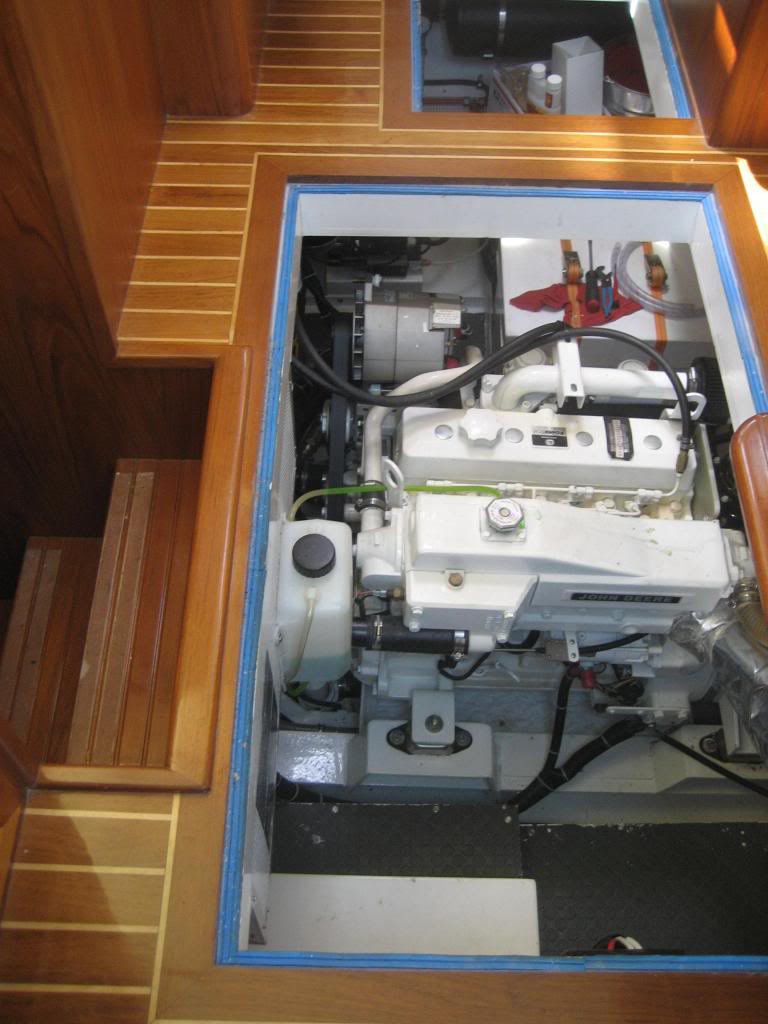Big thanks to all who have contributed to the discussion. I am a regular on another forum that is primarily sailing oriented and it is no surprise that the responses (to this engine related question) have much greater depth on this forum.
O.K. so I found out that one of the noise canceling headsets that I use in aircraft is able to be used "on its own" (I previously believed that the headsets needed to be plugged into the aircraft intercom to activate).
These headsets are made for small piston aircraft (loud). They have large earcups with nice fitting earseals and provide a degree of PASSIVE noise attenuation much like any other simple muff type hearing protector. They also have active noise cancellation circuitry that is switchable on/off.
Today I gave the the headsets a try aboard Panope. Here is the deal:
-I was alone on the boat so I tuned the VHF to the continuous weather broadcast to see if hearing voices was a problem or not.
-I set cruising rpm at 2500 and listened to the VHF - everything normal.
-I then put the headphones on
WITHOUT activating the ANC and found that Mid to High pitch sounds were attenuated from both the engine and the VHF. The VHF remained just as audible as before. The low frequency drone (the sound that I find bothersome after a couple hours) from the engine was basically unchanged.
-I then activated the ANC. The ANC on these headphones did not change the Mid and High frequencies at all. The ANC did not reduce the volume of the VHF whatsoever. The ANC on these headphones eliminated the low frequency drone almost entirely. Just what I was looking for. Wonderful!
-The attenuation of the low frequency drone caused the voice on the VHF to be much easier to hear. I was able to turn the volume
DOWN on the VHF. Great!
I noticed that the headsets that I was originally considering (
ProTech NoiseBuster Noise-Canceling Over-The-Head Safety Earmuff Specifications. Call 203-210-7230 Noise-canceling ANR Safety Earmuff. Noise Reduction, Model: PA4000 Professional Industrial hearing protection. ) have ANC circuitry that
ONLY attenuates the frequencies between 20 hertz and 800 (the audible range for humans is 20 - 20,000) I believe this corresponds well with the headsets that I tried today (I do not have manufacture data for these).
Panope's pilot house (see avatar) is directly over the engine. The pilot house sole is 3/4" Starboard. Starboard is quite dense and free of resonance. I have not yet added insulation to the floor (planning on Soundown). As a result of past experiences attempting to block low frequencies from 2 different aircraft (one wooden, one metal), I am not confident that the addition of Soundown insulation will produce a large attenuation of the
LOW frequencies.
I downloaded a free Decibel Meter "APP" for my Android device. The readings in Panope's pilot house were 70 db at low cruise (1600 rpm) to 80 db at high cruse (3000 rpm) I cannot imagine that this "meter" is something to be accurate and reliable.
Note: I am a 6,000+ hour small aircraft pilot and all of this time has been spent with full size headsets on my head. My tolerance for wearing these devices may be much greater than others.
Steve

 thanks well said.
thanks well said.

 "In theory there is no difference between theory and practice. In practice there is."!!
"In theory there is no difference between theory and practice. In practice there is."!! :lol:
:lol:



